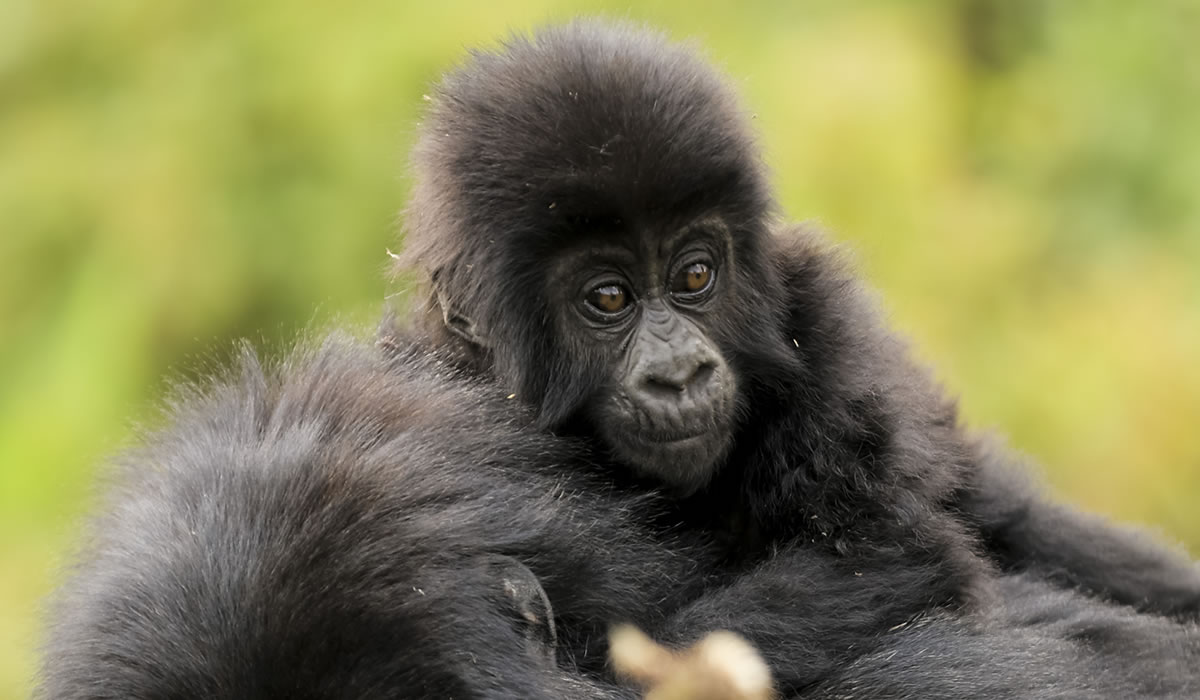Bwindi Impenetrable National Park is one of the most iconic destinations in East Africa, celebrated for its extraordinary biodiversity and the rare mountain gorillas that call it home. Located in the southwestern corner of Uganda, at the edge of the Albertine Rift Valley, this UNESCO World Heritage Site has become a must-visit attraction for travelers seeking authentic wildlife experiences and adventure in Africa. Bwindi covers over 321 square kilometers of tropical rainforest, montane forests, and steep hills, making it one of the most biologically diverse places on earth. It is not only a sanctuary for gorillas but also a paradise for birdwatchers, primate enthusiasts, and eco-tourism lovers.

A Brief History and Conservation Significance
The park was officially gazetted in 1991 to protect the critically endangered mountain gorillas and was recognized as a UNESCO World Heritage Site in 1994 because of its exceptional ecological importance. Before becoming a national park, the forest was home to indigenous communities such as the Batwa, who depended on it for hunting and gathering. Today, conservation programs have balanced the need to protect endangered wildlife while also involving local communities in eco-tourism projects that generate sustainable income. Bwindi is often referred to as the “Switzerland of Africa” because of its mountainous landscape, mist-covered valleys, and cool climate, all of which make it an ideal habitat for mountain gorillas.
The Mountain Gorillas of Bwindi
The main reason most travelers visit Bwindi Impenetrable National Park is to trek the mountain gorillas. Nearly half of the world’s remaining mountain gorilla population lives in this park, with over 20 habituated gorilla families open for trekking. Gorilla trekking is a once-in-a-lifetime experience where visitors hike through dense jungle, guided by experienced rangers, to spend an hour in the company of these gentle giants. Watching gorillas feed, play, groom each other, and display social behaviors is not only captivating but also humbling, as it highlights how closely related they are to humans.
The gorilla trekking experience requires a permit, which must be booked in advance through the Uganda Wildlife Authority or licensed tour operators. Each permit costs around 800 USD for foreign non-residents, making it one of the most exclusive wildlife encounters in the world. Trekking can last anywhere from two to six hours depending on the location of the gorilla family, but the reward of finally encountering them in their natural habitat is worth every step. For those seeking an even deeper experience, the Gorilla Habituation Experience is available, allowing visitors to spend up to four hours with a semi-habituated gorilla group.
Biodiversity and Wildlife
Bwindi is not just about gorillas, it is a living treasure trove of biodiversity. The park is home to over 120 mammal species including forest elephants, giant forest hogs, duikers, bush pigs, and primates such as black-and-white colobus monkeys, L’Hoest’s monkeys, and baboons. Bird lovers find Bwindi a paradise, with over 350 recorded species including 23 Albertine Rift endemics like the African green broadbill, bar-tailed trogon, and handsome francolin. Reptiles, amphibians, and butterflies are also abundant, making the forest a hotspot for ecological research and nature tourism.
The vegetation of Bwindi is equally remarkable, with a mix of lowland and montane forest that has existed for more than 25,000 years. Giant ferns, thick vines, towering mahogany trees, and bamboo create a dense environment that feels like stepping back in time to an untouched prehistoric world. The park’s name “Impenetrable” is fitting, as some parts of the forest are so thick that it takes skilled trackers to navigate through.
Cultural Encounters and Community Tourism
Visiting Bwindi is not just about wildlife, it is also about connecting with the people who live around the park. Several community-based tourism projects give travelers the opportunity to engage with local cultures. The Batwa pygmies, the original inhabitants of the forest, offer cultural experiences where visitors can learn about their traditional way of life, hunting techniques, herbal medicine, and dances. By participating in these cultural tours, travelers directly support conservation and improve the livelihoods of communities that once depended on forest resources.
Craft centers, village walks, and homestays are also available, allowing visitors to see firsthand how eco-tourism benefits local people. The revenue generated from gorilla trekking permits and tourism activities contributes significantly to community development projects such as schools, hospitals, and infrastructure. This has created a win-win situation where both conservation and local well-being thrive.
Accommodation in Bwindi Impenetrable National Park
Bwindi is divided into four main trekking sectors, each with its own gorilla families and accommodation options: Buhoma, Ruhija, Rushaga, and Nkuringo. Buhoma is the oldest and most popular sector, while Ruhija is quieter and ideal for birdwatchers. Rushaga and Nkuringo are perfect for visitors seeking challenging treks and access to the Gorilla Habituation Experience.
Accommodation ranges from budget campsites to midrange lodges and luxury eco-lodges. Some of the notable luxury lodges include Sanctuary Gorilla Forest Camp, Clouds Mountain Gorilla Lodge, and Bwindi Lodge, which offer world-class service and breathtaking views of the forest. Midrange options such as Silverback Lodge and Gorilla Mist Camp provide comfort at affordable prices, while budget travelers can stay at community-run campsites or simple guesthouses. No matter the choice, staying close to the forest provides a unique atmosphere of tranquility surrounded by the sounds of nature.
Activities Beyond Gorilla Trekking
While gorilla trekking is the highlight, Bwindi offers many other activities for nature enthusiasts. Guided forest walks allow visitors to explore waterfalls, hidden trails, and learn about medicinal plants. Birdwatching tours are popular, particularly in the Ruhija sector which is rich in Albertine Rift endemics. For adventurous hikers, the forest provides challenging trails such as the Kashasha River Trail and the Ivy River Trail, both offering stunning views of the forest canopy and the chance to spot wildlife.
The Nkuringo to Buhoma walking safari is another unique experience where travelers cross the forest on foot, accompanied by guides and porters. This walk connects the southern and northern sectors of the park, providing a deeper appreciation of the forest ecosystem. Cultural visits, craft shopping, and relaxation at eco-lodges complete the range of activities that make Bwindi more than just a gorilla destination.
Accessibility and Best Time to Visit
Bwindi Impenetrable National Park can be accessed by both road and air. By road, it takes about 8 to 10 hours from Kampala or Entebbe, passing through scenic landscapes, terraced hills, and rural villages. The park can also be reached from Kigali, Rwanda, in about 4 to 5 hours, making it convenient for travelers combining Rwanda and Uganda safaris. For those who prefer flying, domestic airlines like AeroLink operate scheduled flights from Entebbe to Kihihi or Kisoro airstrips, which are a short drive from the park.
The best time to visit Bwindi is during the dry seasons, which occur from June to September and December to February. During these months, the forest trails are less slippery, and gorilla trekking is more manageable. However, Bwindi is a rainforest, so showers can occur at any time of the year. The wetter months of March to May and October to November are less crowded, and some lodges offer discounted rates, but trekking conditions can be more challenging.
Conservation Challenges and Achievements
Despite its success as a conservation area, Bwindi still faces challenges such as habitat encroachment, human-wildlife conflict, and the threat of disease transmission between humans and gorillas. Strict regulations, including maintaining a 7-meter distance from gorillas and limiting group sizes to eight visitors per trek, are enforced to minimize risks. The involvement of local communities in tourism revenue-sharing programs has significantly reduced poaching and illegal activities, showing how conservation can succeed when people are part of the solution.
International recognition and support from organizations such as the World Wildlife Fund, Gorilla Doctors, and the Dian Fossey Gorilla Fund have contributed to the steady growth of gorilla populations in Bwindi. This success story has made Bwindi a model for community-led conservation across Africa.
Why Visit Bwindi Impenetrable National Park
Bwindi is more than just a travel destination, it is a place of discovery, wonder, and inspiration. Whether you are standing face-to-face with a silverback gorilla, listening to the melodies of rare birds, or sharing stories with the Batwa people, every moment spent in Bwindi is unforgettable. The park combines adventure, conservation, culture, and natural beauty, offering one of the most authentic African experiences imaginable.
For travelers seeking a once-in-a-lifetime safari in Uganda, Bwindi Impenetrable National Park is a destination that cannot be missed. It is a reminder of the delicate balance between humans and nature and the importance of protecting the world’s most endangered species. As one of Africa’s greatest treasures, Bwindi continues to inspire conservationists, researchers, and explorers from all over the world.
